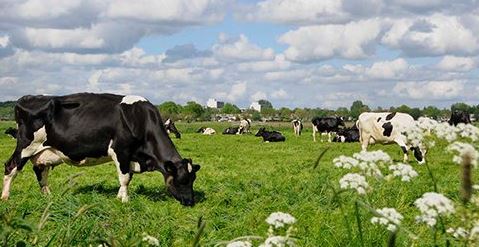



What Makes A Good Grazer?
Electronic sensors used by Dutch scientists hope to unravel the mysteries of what 'good grazers' do.A University of Wageningen study aspires to use cow grazing behaviour as a means of clarifying what good grazing activity is and which cows are doing it well.
This work involves a group of 60 cows grazed on pasture during the day but kept indoors in a cubicle house at night. They are milked with a robot situated in the cubicle house, but are free to roam to and from the cubicle house (e.g. to visit the milking robot) while on pasture.
Recordings of Behaviour
During the summer, detailed recordings have been made of the behaviour of the cows at pasture, explains Wageningen UR researcher Kees van Reenen.
.JPG)
“We have focused specifically on distances between cows on pasture (inter-individual distances), synchrony levels of behaviour and on timing and frequency of visits to the milking robot.
In addition, we assessed the social dominance ranks within the herd, based on indoor behavioural observations.
Furthermore, each cow is equipped with two sensors, one recording rumination, and another to detect standing and lying behaviour. Data provided by these sensors complements data from live behavioural observations.”
Behavioural Tests
This autumn, when the cows are housed continually indoors, each animal will be subjected to two behavioural tests: one so-called ‘novel environment test’ and one so-called ‘social runway test’.
Individual differences in behavioural responses to these tests are assumed to reflect differences in underlying temperamental traits, such as ‘activity’ and their need to be close to conspecifics or ‘sociability’ trait.
Objectives
Our main objective is to examine relationships between the various behavioural measures obtained in the present study, between, on the one hand, behaviour at pasture (including visits to the milking robot) and, on the other hand, social dominance rank and responses to the behavioural tests.
This is a first step in attempting to understand the extent to which cows differ in behaviour during grazing (and in other parameters such as visits to the milking robot and milk production during grazing), and those factors influencing these differences.
Ultimately, we hope that this type of research will help us to identify the essential behavioural characteristics of a good grazer. This knowledge has the potential to provide important information to aid improvements in grazing efficiency through tailor-made breeding programmes.



